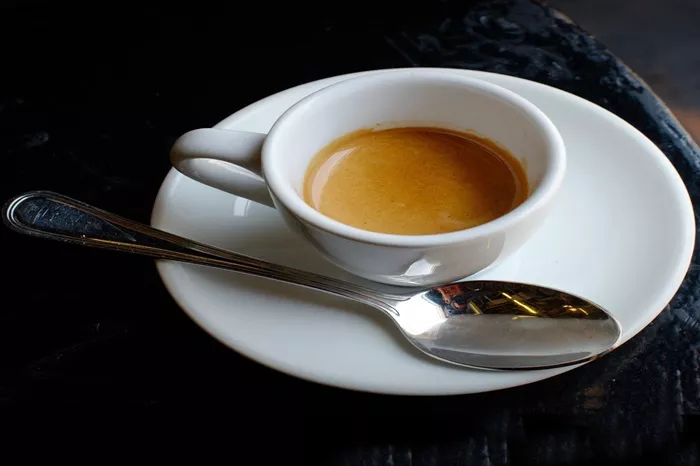What Is Decaf Espresso?
The Decaffeination Process and Its Impact on Flavor
Swiss Water Process
CO2 Process
Solvent-Based Process
Top 5 Decaf Espresso Recommendations
Stumptown Coffee Roasters – Trapper Creek Decaf Espresso
Pros
Cons
Lavazza – Decaffeinato Espresso
Pros
Cons
Illy – Decaffeinated Espresso
Pros
Cons
Verve Coffee Roasters – Decaf Espresso
Pros
Cons
Coffee Bros. – Decaf Espresso Blend
Pros
Cons
Flavor Profiles of Decaf Espresso
Stumptown Trapper Creek
Chocolate, caramel, nutty – rich and smooth with a balanced sweetness.
Lavazza Decaffeinato
Roasted with fruity undertones – smooth and light, great for milk-based drinks.
Illy Decaffeinated
Chocolate, caramel – smooth and mild, ideal for those who prefer a classic espresso flavor.
Verve Decaf Espresso
Toffee, brown sugar, milk chocolate – sweet, comforting, and well-rounded.
Coffee Bros. Decaf Espresso Blend
Dark chocolate, toffee, mild citrus – bold with a bright finish.
In general, decaf espresso tends to have a smoother, more mellow flavor profile compared to regular espresso, with less acidity and bitterness. However, the flavor differences between high-quality decafs and regular espressos are minimal, thanks to advances in decaffeination technology.
Decaffeination Methods
The method used to decaffeinate the coffee can affect the final flavor, and understanding the differences can help you choose the best decaf espresso for your taste preferences.
Swiss Water Process
This chemical-free method uses water to extract caffeine while preserving the flavor of the beans. It’s often preferred for decaf espresso as it results in cleaner, more complex flavors.
CO2 Process
Uses liquid carbon dioxide to remove caffeine. This method is more expensive but preserves more of the natural flavors, making it a great choice for high-quality decaf.
Solvent-Based Process
Chemical solvents are used to extract caffeine. While effective, it may result in a slightly less flavorful cup, as solvents can affect the taste.
Swiss Water and CO2 processes are typically preferred for premium decaf espresso, as they offer a cleaner, more natural taste.
Buying Guide: How to Choose and Store Decaf Espresso Beans
Tips for Buying Decaf Espresso
Look for high-quality beans: Opt for brands that use premium beans and gentle decaffeination methods like Swiss Water or CO2.
Consider roast level: Medium to medium-dark roasts are common for decaf espressos, as they provide a good balance of flavor without excessive bitterness.
Check reviews: User feedback can help you gauge the flavor and consistency of a decaf espresso.
How to Store Decaf Espresso Beans?
Store in an airtight container: Keep beans in a cool, dry place, away from heat and sunlight.
Grind just before brewing: For the freshest cup, grind your decaf beans immediately before brewing.
User Reviews and Ratings
Many of the decaf espressos listed above have received positive reviews for their flavor, smoothness, and consistency. For instance, Stumptown’s Trapper Creek has garnered attention for its balanced and sweet flavor, while Lavazza’s Decaffeinato is a go-to for fans of mild, smooth espresso.
Additionally, products like Illy’s Decaffeinated Espresso have earned praise for their classic espresso flavor, while Coffee Bros.’ Decaf Blend has been lauded for its bold, rich taste with a citrus finish.
Additional Resources
For those interested in purchasing these decaf espressos, many can be found on popular coffee retailer websites like Stumptown Coffee Roasters, Lavazza, Verve Coffee Roasters, and Coffee Bros..
Conclusion
By considering the decaffeination method, roast level, and flavor profile, you can enjoy a rich and satisfying decaf espresso experience, whether you’re drinking it straight or crafting your favorite espresso-based drinks.
Related topics:


